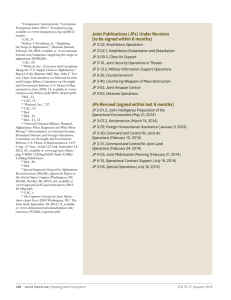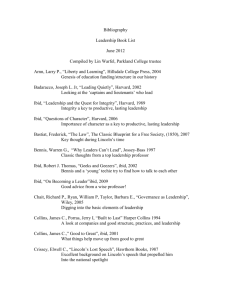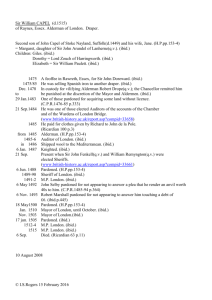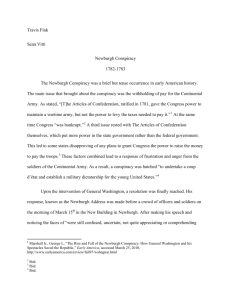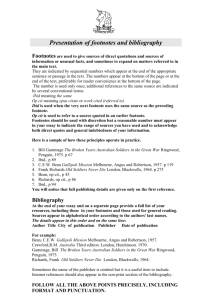American Environmental Movement: From Preservation to Pragmatism
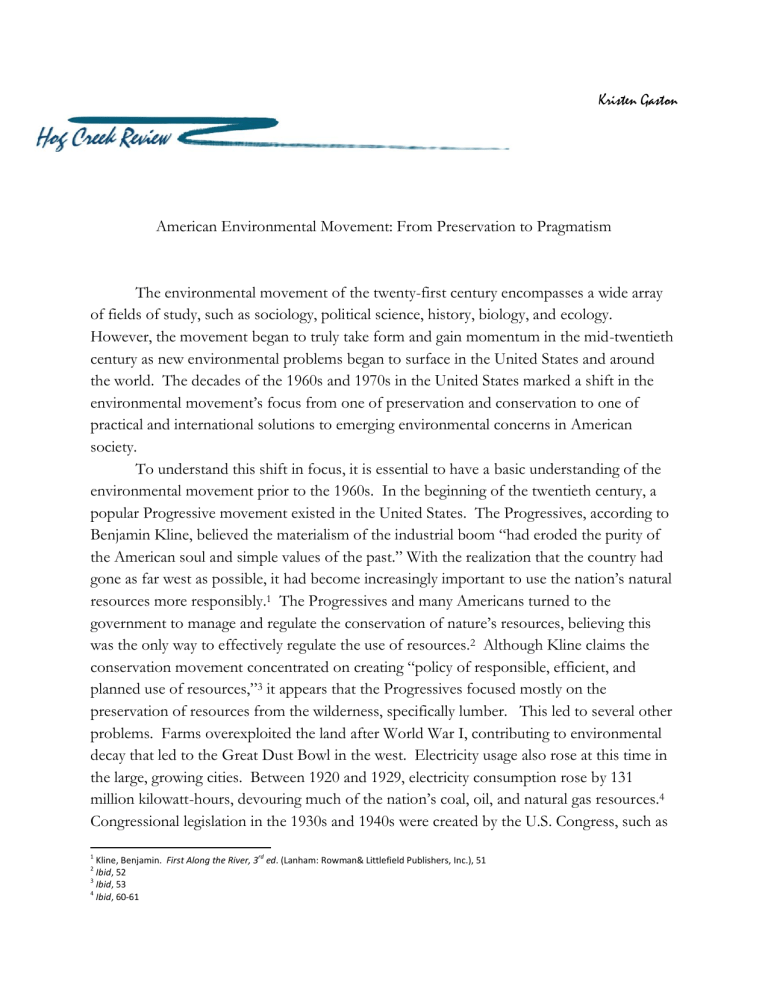
Kristen Gaston
American Environmental Movement: From Preservation to Pragmatism
The environmental movement of the twenty-first century encompasses a wide array of fields of study, such as sociology, political science, history, biology, and ecology.
However, the movement began to truly take form and gain momentum in the mid-twentieth century as new environmental problems began to surface in the United States and around the world. The decades of the 1960s and 1970s in the United States marked a shift in the environmental movement‟s focus from one of preservation and conservation to one of practical and international solutions to emerging environmental concerns in American society.
To understand this shift in focus, it is essential to have a basic understanding of the environmental movement prior to the 1960s. In the beginning of the twentieth century, a popular Progressive movement existed in the United States. The Progressives, according to
Benjamin Kline, believed the materialism of the industrial boom “had eroded the purity of the American soul and simple values of the past.” With the realization that the country had gone as far west as possible, it had become increasingly important to use the nation‟s natural resources more responsibly.
1 The Progressives and many Americans turned to the government to manage and regulate the conservation of nature‟s resources, believing this was the only way to effectively regulate the use of resources.
2 Although Kline claims the conservation movement concentrated on creating “policy of responsible, efficient, and planned use of resources,” 3 it appears that the Progressives focused mostly on the preservation of resources from the wilderness, specifically lumber. This led to several other problems. Farms overexploited the land after World War I, contributing to environmental decay that led to the Great Dust Bowl in the west. Electricity usage also rose at this time in the large, growing cities. Between 1920 and 1929, electricity consumption rose by 131 million kilowatt-hours, devouring much of the nation‟s coal, oil, and natural gas resources.
4
Congressional legislation in the 1930s and 1940s were created by the U.S. Congress, such as
1
Kline, Benjamin. First Along the River, 3 rd
ed . (Lanham: Rowman& Littlefield Publishers, Inc.), 51
3
2
Ibid , 52
Ibid , 53
4
Ibid , 60-61
2 the Taylor Grazing Act (1934), the Soil Conservation Act (1935), and the U.S. Fish and
Wildlife Service (1940). These acts desired to protect the soil from erosion and manage soil and water conservation, as well as established over 160 new wildlife refuges.
5 However, industrial expansion in the 1940s and 1950s continued to develop at the expense of the environment and the nation‟s resources.
Some scientific and social progress during and following World War II caused much environmental degradation. One of these was the development of the atomic bomb, which released radioactive gases into the atmosphere.
6 Another change was the growth of suburbs.
By July 1948, thirty-six homes were being completed each work day in Levittown alone.
7
This cost the nation much in terms of timber to build these homes, as well as in gas to move building materials across the country. Chemicals such as DDT had also become available post- World War II and were widely used in agriculture. By 1960, 637,666,000 pounds of
DDT potent pesticides were being produced in the United States.
8 The rapid growth in urbanization, suburbs, industry, and technology after WWII not only created greater consumption of resources but new levels of waste as well. This waste quickly affected the quality of air and water in the United States.
9 The conservation of the 1930s and 1940s focused too much on the efficient use of the resources and wilderness, which left local governments to address problems such as resource allotment and water development.
10 This allowed resources to dwindle and water problems to worsen before the federal government would step in to address these issues.
In the late 1950s, the Colorado River Storage Project (CRSP) began to address the water problem for agriculture, ranching and urban use in Utah, Colorado, New Mexico, and
Wyoming. However, a controversial debate broke out regarding a proposal in the CRSP to build a dam in the Dinosaur National Monument. The proposal was successfully put down by environmentalists through framing the national parks as “sacred.” This simply continued to keep the focus on the national parks and wilderness, continuing to neglect other parts of the nation.
11 According to Hal K. Rothman, “in most cases, environmentalists of the 1950s and early 1960s took little notice of urban sprawl and pollution except in the most peripheral of ways.” 12 However, many changes began to take place in the 1960s that would force the nation to take note of the rising environmental problems.
5
Ibid , 65- 66
6
Ibid , 71
7
Rothman, Hal K. The Greening of a Nation? Environmentalism in the United States since 1945 . (Orlando: Harcourt
Brace College Publishers), 9-11 (Here after cited as: Greening of a Nation?
)
8 Kline, 71
9
Ibid , 11-12
10
Ibid , 29-31
11
Ibid , 53-54
12
Ibid , 55
3
In the 1960s, Americans in general began to develop and embrace a type of utopianism that encompassed the idea that “humanity would be happier in simpler circumstances.” 13 Americans became consumed with individualism, individual rights, and improving their quality of life. Lyndon Johnson‟s “Great Society” contributed to and reinforced this view.
14 Americans wanted to improve their quality of life in their cities, towns, and neighborhoods. Therefore, focus during this time shifted to preserving the whole environment, including the areas in which people lived every day, not on simply preserving the pristine natural areas, which were nice to visit on a vacation.
15
Several factors contributed to the rise of environmental concern in the 1960s that continued through the 1970s. Two of these factors in the growth of environmental awareness were media and literature and the many environmental disasters that took place during the 1960s. During this time, ample amounts of literature and media were released concerning the cost of new technologies and careless actions of Americans on nature, such as Paul Ehrlich‟s The Population Bomb .
16 However, possibly the most influential piece of literature was Rachel Carson‟s work published in 1962, Silent Spring .
17 In her book, Carson warned of the impeding environmental crisis of the period, specifically that caused by the use of chemicals such as DDT. She encourages readers to change the path civilization was currently taking toward destruction of the environment. She wrote:
We stand now where two roads diverge… The road we have been traveling is deceptively easy, a smooth superhighway on which we progress with great speed, but at its end lies disaster. The other fork of the road- the one „less traveled by‟- offers our last, our only chance to reach a destination that assures the preservation of our earth. The choice, after all, is ours to make.
18
Rothman claims that over 600,000 copies circulated in just the book‟s first year after being released, immediately becoming a best seller!
19 Therefore, Silent Spring is important in understanding the rise in the public‟s fears and environmental concerns during this time. The
“Keep America Beautiful” campaign also raised awareness concerning the litter and population problem.
20 The program spread awareness using several methods, but arguably one of the most influential was the campaign‟s television commercial featuring “Iron Eyes
Cody.” 21 The commercial illustrated an American Indian man, “Iron Eyes Cody,” paddling a canoe in a river polluted with litter through an industrial city. It conveyed a powerful
13
Ibid , 83
14
Ibid , 84-85
15
Kirk, Andrew G. Counterculture Green: The Whole Earth Catalog and American Environmentalism . (Lawrence: University Press of Kansas), 14
16 Rothman, Greening of a Nation?, 90-91
17 Carson, Rachel. Silent Spring . (Boston: The Riverside Press Cambridge)
18
Ibid , 277
19
Rothman, Hal K. Saving the Planet . (Chicago: The American Way Series), 119-120
20
Rothman, Greening of a Nation?, 96-98
21
Ibid, 95
4 message that “People start pollution. People can stop it.” 22 The Ad Council claims that this campaign was very successful and reduced litter pollution by as much as 88% in 300 communities, 38 states, and several countries by the campaign‟s end.
23 These were just two examples of many actions designed to raise awareness of the environmental problems that concerned all of American society that, many argued, could and should be addressed.
Several natural disasters came to the attention of the media and mainstream society in the 1960s, as well. These disasters did not concern the wilderness. Instead, they had to do with pollution of the air, rivers and oceans, which affected the everyday lives of people.
Cities across the United Sates, such as Los Angeles, began to experience “smog,” which resulted from the automobile and industrial emissions of the area.
24 The fresh water around populated cities had become increasingly polluted. This became apparent when the
Cuyahoga River in Cleveland, Ohio caught on fire again in 1969.
25 The Santa Barbara Oil
Spill in 1969, which released 235,000 gallons of crude oil in the ocean and blackened over 30 miles of beach, was another natural disaster of this time.
26 Events such as these quickly brought Americans to the realization that no location or class of society was immune from the impeding environmental crisis. Careless actions and the prosperity of American life carried costs to the environment and, as a result, to the quality of life of all Americans, of every societal class.
27
The increasing in awareness of the environmental crisis led to many changes in policy that focused on the environment as a whole. Samuel P. Hays argues that “much of the initial interest [in environmentalism] concerned aesthetics” in the early 1960s arose because smoke in cities and raw sewage in streams, such as the Potomac River in Washington D.C., was very unattractive and offensive.
28 However, there was a great concern for citizens‟ health that contributed to the changes as well. In 1963, the Federal Clean Air Act was passed by the
U.S. Congress to address the pollution problem.
29 This act allowed the Public Health
Service of the Department of Health, Education, and Welfare to participate in more extensive research and take action to reduce interstate air pollution. It also allowed the federal government to establish regulations on monoxide and hydrocarbon emissions of new vehicles in 1966.
30 In 1966, the Clean Waters Act was passed as well to give the government
22 Ad Council, “Pollution- Keep America Beautiful- Iron Eyes Cody (1961-1983): Canoe,” Ad Council , http://www.adcouncil.org/video.asp?cid=38&campaign=Pollution: Keep America Beautiful&url=http://
23 adcouncil.wmod.llnwd.net/a540/o1/adcouncil/historical/KAB_IndianInCanoe_60.wmv&title=Canoe
Ad Council, “Pollution-Keep American Beautiful- Iron Eyes Cody (1961-1983),” Ad Council , http://www.adcouncil.org/default.aspx?id=132
24
Rothman, Greening of a Nation?, 98-99
25 Ibid, 99
26 Ibid, 101-105
27
Ibid , 101-102
28
Hays, Samuel P., “The Environmental Movement,” Journal of Forest History 25 (1981): 219
29
Rothman, Greening of a Nation?, 104
30
Schreurs, Miranda A. Environmental Politics in Japan, Germany, and the United States.
(Cambridge: Cambridge University Press), 34
5 more power to regulate water quality.
31 Also, in 1967, the Air Quality Act established air quality standards in metropolitan regions.
32 Two years later, the National Environmental
Policy Act (NEPA) was established by the U.S. Congress, which contained several provisions. One such provision was the requirement of environmental impact statements
(EIS) to be written for every federal or federally supported undertaking to describe the environmental impact of the project. The NEPA also created the Council of Environmental
Quality in 1969 and, in 1970, the Environmental Protection Agency (EPA). The EPA would centralize the federal agencies that had responsibility for environmental affairs. The NEPA did not stop all environmentally risky projects, but it was certainly a step towards creating a check on the government‟s actions when it concerned the environment. The NEPA even gave President Nixon the ability to halt a $50 million Cross-Florida Barge Canal because of the project‟s environmental impact.
33 These changes in the United State government‟s policy clearly demonstrate a switch in focus towards sustaining the quality of the environment in all parts of the country, not just the beautiful American wilderness.
The 1970s marked an increase in interest and the popularity of the environmental movement. The public had become energized and as a result an increased amount of legislation was passed.
34 The first Earth Day, celebrated on April 22, 1970 was evidence that the public responded to the new focus of the movement. Earth Day began as a series of environmental teach-ins in which people expressed their views at colleges, high schools, and community centers across the United States.
35 Newspapers posted lists of the teach-ins for the public. The Chicago Tribune , for example, listed over 30 environmental teach-ins that were being held in the Chicago area alone in observance of Earth Day.
36 These teach-ins concentrated on issues concerning pollutions of the air, water, solid waste, chemicals, and noise, but in general their main focus was to discuss real solutions to make life better.
37 This idea of pragmatism was a theme that had become very popular in the environmental movement during this time. In fact, Andrew G. Kirk claims that this was the central idea behind The Whole Earth Catalog published in the early 1970s- to spread practical ideas of selfsustainability through the use of environmental-friendly designs and alternative technologies.
38 About twenty million people, from school-aged children to adults, participated in Earth Day celebrations in 1970, making it the largest demonstration in
31
Rothman, Greening of a Nation?, 114
32
Schreurs, 34
33 Rothman, Greening of a Nation?, 116-119
34 Ibid , 126-128
35
Ibid, 121
36
“Here’s List of Environmental Teach-Ins in the Chicago Area,” Chicago Tribune , April 19, 1070, sec. 1A
37
Hill, Gladwin, “Nation Set to Observe Earth Day,” New York Times , April 21, 1970, p.36
38
Kirk, Andrew G. Counterculture Green: The Whole Earth Catalog and American Environmentalism . (Lawrence: University Press of Kansas), 90
6
American history.
39 This shows that mainstream American society had become very concerned with the environment and believed it was time to take action in to protect it.
Alternative technology and self-sustainability, as previously mentioned, were prominent ideas of environmentalism during the 1970s. This was further prompted by the first interruption of oil from the Middle East in 1973 and 1974. Following the oil embargo, an alternative energy program was created and began to emphasize greater efficiency in the use of energy.
40 Although many were not new concepts, soft technologies such as windmills moved to the forefront of the environmental movement.
41 The environmental movement had certainly begun to aim its attention to using human ingenuity to find solutions to environmental issues.
Although much of this research has been focused on environmentalism and policy changes in the United States, the environmental movement was much more widespread.
Countries such as Great Britain, Japan, and Germany had similar problems of pollution post-World War II. Each of these nations began to individually take action in government policies to combat pollution in the 1950s and 1960s. Two examples of such policies enacted were the Clean Air Act of 1956 in Great Britain and the 1959 Federal Emissions Control
Law in Germany.
42 However, countries across the world began to discover that many environmental issues seemed to be transnational and global.
43 Just as the Leopold Report of
1963 in the U.S. had pointed out, it was once again discovered that boundaries are political not ecological.
44 Pollution of the seas, oceans, and air, as well as the depletion of ocean fisheries and destruction of tropical forests, affected many nations. Therefore, several nations would have to work together to eliminate these problems. One of the first steps taken towards this collaboration was the United Nations Conference on the Environment held in Stockholm in 1972.
45 At this conference, there was an official recognition of the
“international concern for the environment” and the creation of the United Nations
Environment Program (UNEP).
46 This is why the 1970s are viewed as the beginning of the international collaboration on environmental concerns that has continued to the present day.
The environmental movement during the decades of the 1960s and 1970s resulted in a change of focus. The movement of the early twentieth century concentrated on the preservation and conservation of the wilderness. However, this alienated most of the population in the United States who lived in the suburbs and urban areas. As environmental
39
Ibid , 100-101
40
Hays, 220
41 Kirk, 106
42 Schreurs, 32-52
43
Hays, 220
44
Rothman,53
45
Hays, 220
46
Kline, 94
7 problems increased in the cities and suburbs, American society, out of necessity, had become more concerned with the protection of the quality of their air and water. This caused the movement to shift its focus towards finding solutions to environmental concerns in technology. Environmentalism of the twenty-first century, now based on ideas of alternative technology and self-sustainability, took form in the mid-twentieth century in this way.
Bibliography
Books
Carson, Rachel. Silent Spring . Boston: The Riverside Press Cambridge, 1962.
Kirk, Andrew G. Counterculture Green: The Whole Earth Catalog and American Environmentalism .
Lawrence: University Press of Kansas, 2007.
Kline, Benjamin. First Along the River , 3 rd ed. Lanham: Rowman & Littlefield Publishers, Inc.,
2007.
Rothman, Hal K. Saving the Planet . Chicago: The American Way Series, 2000.
Rothman, Hal K. The Greening of a Nation? Environmentalism in the United States since 1946 .
Orlando: Harcourt Brace College Publishers, 1998.
Schreurs, Miranda A. Environmental Politics in Japan, Germany, and the United States . Cambridge:
Cambridge University Press, 2002.
Articles
Ad Council, “Pollution-Keep American Beautiful- Iron Eyes Cody (1961-1983),” Ad Council , http://www.adcouncil.org/default.aspx?id=132. Accessed February 26, 2011.
Hays, Samuel P., “The Environmental Movement,” Journal of Forest History 25 (1981):219-
221.
“Here‟s List of Environmental Teach-Ins in the Chicago Area,” Chicago Tribune, April 19,
1970, sec. 1A
Hill, Gladwin, “Nation Set to Observe Earth Day,” New York Times , April 21, 1970, p.36
Hendricks, Rickey L., “The Conservation Movement: A Critique of Historical Sources,” The
History Teacher 16 (1982): 77-104.
Nonwritten Sources
Ad Council, “Pollution- Keep America Beautiful- Iron Eyes Cody (1961-1983): Canoe,” Ad
Council , http://www.adcouncil.org/video.asp?cid=38&campaign=Pollution: Keep
AmericaBeautiful&url=http://adcouncil.wmod.llnwd.net/a540/o1/adcouncil/histori cal/KAB_IndianInCanoe_60.wmv&title=Canoe. Accessed February 26, 2011.
